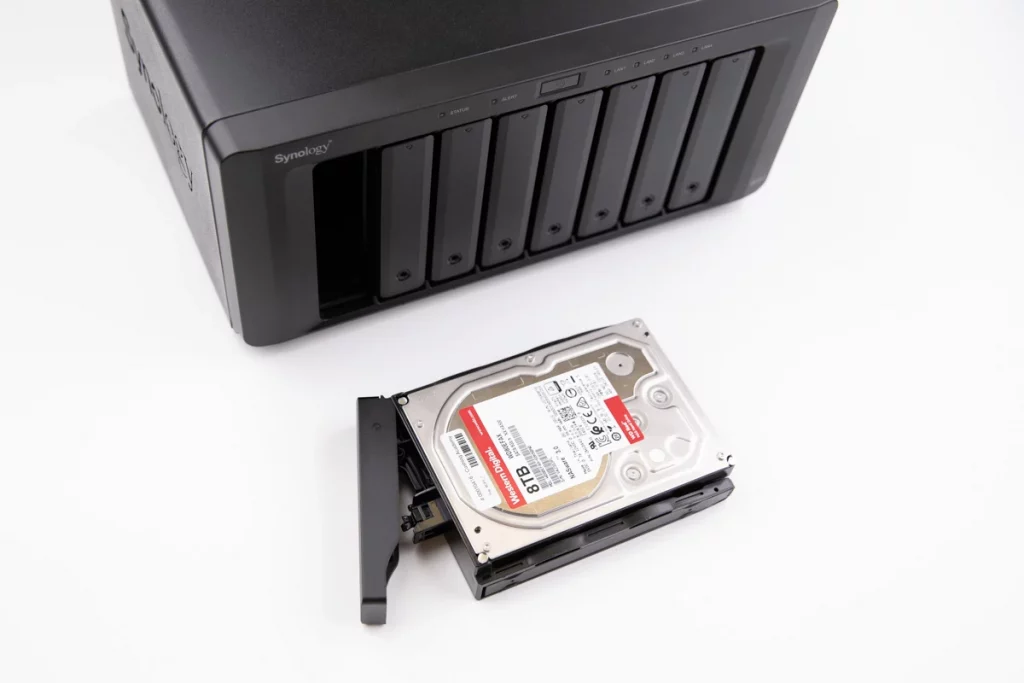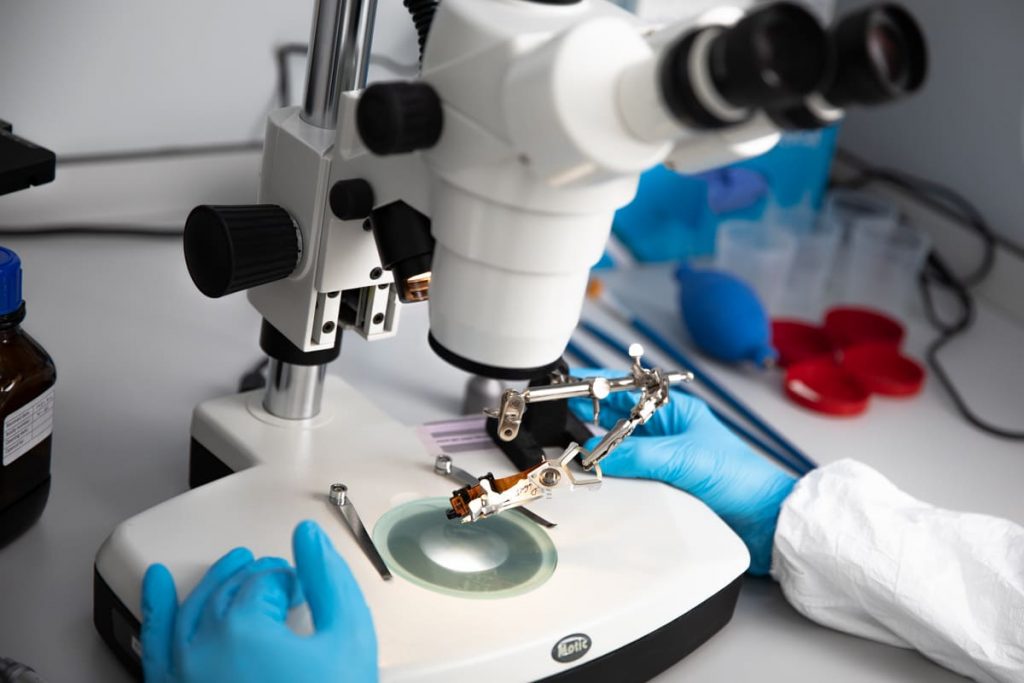A local marketing agency contacted our team after its NAS dropped offline, cutting access to client databases and creative media. The outage disrupted the internal network and halted cloud synchronisation, putting active projects at risk.
After several unsuccessful attempts to restore service in-house, the agency engaged RAID Recovery Services for NAS data recovery. Given the business impact, they requested an expedited assessment to minimise downtime and get operations back on track.
Our engineers mobilised immediately, arranging secure intake and a controlled diagnostic to identify the root cause of failure and enable a safe, forensically sound data recovery.

Case Background
The agency operated a network-attached storage (NAS) platform populated with a WD Red NASware hard drive to centralise internal projects and client data. The environment enabled concurrent access for multiple users and synchronised updates with their cloud workspace.
Over time, the team observed sluggish file streaming and unstable performance under load. The situation escalated when the NAS drive stopped appearing altogether, removing access to all shared folders.
These symptoms typically point to underlying hardware or firmware faults. As outlined in our NAS data loss causes guidance, sustained heat, power irregularities, or sustained workload pressure can trigger drive malfunction or filesystem corruption in NAS deployments.
Troubleshooting and Client Actions
Before escalating, the in-house IT team executed a structured triage:
Network and power validation. Confirmed the NAS was online at the switch, cables seated, and power delivery stable.
Direct SATA test. Removed the WD Red NAS drive and connected it to a workstation via SATA to attempt direct file access. The system did not detect the drive.
Firmware and reboot cycle. Performed controlled restarts and attempted a firmware reinstall. Neither action restored visibility or access.
NAS-specific drives differ from standard desktop disks in firmware behaviour and error recovery, so direct connection often fails to surface data. See our article on NAS Hard Drive vs Regular to understand these differences.
Recognising the need for specialist tools and expertise, the agency sent the device to RAID Recovery Services for an expedited evaluation.

Evaluation and Findings
Upon receipt, our engineers initiated an expedited evaluation to isolate the failure. The WD Red NASware HDD was connected to diagnostic tooling, yet the operating system did not detect it, confirming a hardware-level fault.
To mitigate risk, the drive was transferred to our ISO Class 10 cleanroom for internal inspection. This controlled environment prevents dust and other contaminants from compromising sensitive components during diagnostics.
During inspection, the engineer observed clear signs of heat stress and scorched traces on the printed circuit board. The evidence pointed to an electrical overload that damaged key components and left the device fully undetectable.
Root Cause and Recovery Process
Diagnostics confirmed the PCB had failed due to sustained load and heat build-up. This type of fault is common when a NAS operates continuously under high demand without adequate cooling.
To restore access, our engineers executed a structured recovery workflow:
The damaged PCB was replaced with a matched donor board from our parts inventory.
The original ROM chip, which holds drive-specific calibration data, was desoldered and migrated to the donor board to preserve firmware alignment.
After stabilisation, the drive was imaged sector by sector to protect data integrity and avoid unnecessary wear.
The logical structure was rebuilt and all accessible files were safely extracted.
This sequence preserved the user’s data end to end while preventing further hardware degradation.

Results and Outcome
Following the recovery workflow, our engineers restored all data from the failed WD Red NASware drive. The recovered set included client databases, media libraries, and project archives critical to the agency’s day-to-day work.
Every file was verified for accuracy and integrity, then securely transferred to a new, reliable storage device. The engagement was completed within the expedited turnaround agreed during consultation.
With the dataset returned and validated, the agency resumed normal operations immediately. The case highlights the value of swift escalation and professional diagnostics when NAS devices suffer electronic or thermal failures.
Trust the experts with proven results
Prevention Tips and Conclusion
This case shows how sustained workload and insufficient cooling can trigger NAS drive failure and data loss. To reduce the risk, our engineers recommend:
Monitor drive temperature. Position NAS units in well-ventilated areas and track internal temperatures routinely.
Avoid continuous overloads. Balance access across users and schedule planned downtime to prevent heat build-up.
Perform regular backups. Maintain both local and cloud backups for critical datasets.
Schedule preventive maintenance. Inspect power supplies, cabling, and cooling fans on a regular cycle.
Follow data protection practices. Learn more in our Data Loss Prevention guide.
At RAID Recovery Services, we specialise in professional NAS drive data recovery across physical and electronic failures. Our secure facilities and experienced engineers deliver reliable outcomes even in severe scenarios.
If your NAS stops responding or becomes inaccessible, contact us for a professional evaluation and immediate recovery support.

Frequently Asked Questions
What caused the NAS drive to fail in this case?
The WD Red NASware drive overheated under sustained heavy load, which damaged the PCB. The burnt circuitry left the drive undetectable by the NAS and by external systems.
Can data be recovered from a NAS drive with a burnt PCB?
Yes. If the damage is confined to the PCB, engineers can fit a compatible donor board, transfer the original ROM chip, re-establish firmware alignment, and extract the data safely.
How long does NAS drive data recovery take?
Timeframes vary by fault severity and configuration. This expedited case completed within a day, while more complex scenarios, such as multi-drive or RAID recoveries, may require several days.
Why should I avoid connecting a failed NAS drive directly to a computer?
NAS drives often use different filesystems and firmware behaviours than desktop disks. Direct SATA connection can introduce further corruption and increase the risk of data loss.
How can I prevent NAS drive failure in the future?
Ensure good ventilation, avoid continuous high-load operation, and maintain regular backups of critical data. Periodic health checks of power, cabling, and cooling also help reduce risk.